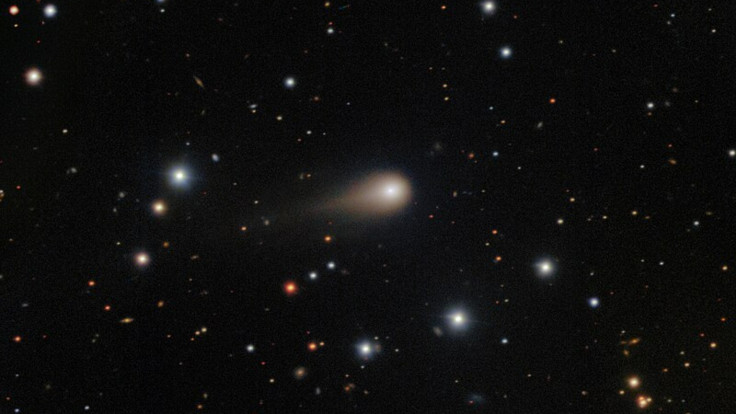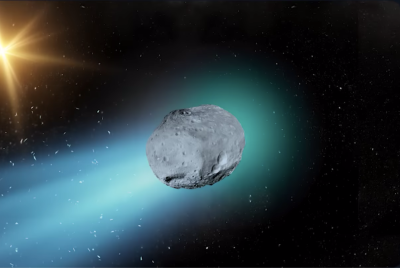3I/ATLAS Trajectory: Harvard Scientist Claims Object Is Sending Spy 'Satellites'
Unmasking 3I/ATLAS: The Anomalous Interstellar Object Targeting Jupiter with Spy Probes

The universe has always been an exhibition of unpredictable natural phenomena, but what if our newest cosmic visitor is deliberately defying nature's rules? Since the interstellar object 3I/ATLAS first appeared in July 2025, it has been widely described as merely the third confirmed interloper from outside our solar system, following the famous 'Oumuamua and Borisov.
Yet, the characteristics of this Manhattan-sized celestial body have led one of the world's most prominent astrophysicists to advance a controversial hypothesis: that this is not a natural comet at all, but a massive extraterrestrial 'mothership' intentionally deploying smaller surveillance 'satellites' to spy on our planetary system, particularly the giant Jupiter.
The Anomalous Trajectory: A Celestial Smoking Gun
Avi Loeb, the Harvard Professor of Science, is the chief proponent of the technological artefact theory. Professor Loeb, who previously stirred global debate with similar claims about 'Oumuamua in his book Extraterrestrial argues that the seemingly routine classification of 3I/ATLAS as a natural comet fails to account for a dozen extraordinary anomalies.
While planetary scientists at NASA and other institutions overwhelmingly maintain that 3I/ATLAS is a natural object—noting its coma, tail, and water vapour outgassing—Professor Loeb counters that an artificial craft travelling through cold interstellar space could easily have gathered an icy, dusty layer. He argues that this frose would sublimate near the Sun, mimicking a comet's behaviour and disguising the vessel beneath.
Unexplainable Jets and Composition
The most compelling pieces of evidence cited by Professor Loeb concern the object's peculiar emissions and its complex, tightly controlled movement. Observations taken following its closest approach to the Sun on 29 October 2025 revealed tightly collimated jets extending for millions of kilometres.
Professor Loeb highlighted a startling image showing a plume structure pointing ahead of the object and perpendicular to the direction of the Sun. This feature is nearly impossible to explain through standard comet physics, where jets typically form towards or away from the Sun due to illumination and solar pressure.
'It is much more difficult to account for a plume extended perpendicular to the direction of the Sun and ahead of the object,' Professor Loeb wrote, suggesting this could be a 'technological signature of illuminating or clearing the path' from hazardous micrometeorites.
Furthermore, the spectral analysis of the object detected nickel emissions, but without the corresponding iron expected in a conventional icy body, adding another layer of mystery to its unusual composition.
Spy 'Satellites' and the Jupiter Rendezvous
The theory that 3I/ATLAS is actively dispatching spy 'satellites' stems directly from its improbable, custom-tuned trajectory. While astronomers stress that the object poses no danger—it will pass no closer than 270 million kilometres from Earth on 19 December 2025—its close encounters with multiple planets are statistically baffling.
Professor Loeb calculates that the alignment of its path with the plane of the planets is so rare that the chance of it being a random, natural interstellar object is approximately one in a hundred million.
He has categorised this fine-tuning as a major anomaly, noting that the object's path brought it within 29 million kilometres of Mars in early October 2025 and will subsequently lead it toward the solar system's largest planetary body.
Targeting the Gas Giant
The key finding supporting the 'spy probe' hypothesis involves the object's predicted encounter with Jupiter in March 2026. The necessary data regarding the comet's non-gravitational acceleration near perihelion enabled scientists to forecast a perijove distance of 53.445 (± 0.06) million kilometres.
This distance, Professor Loeb notes, is virtually identical to Jupiter's Hill's radius (53.502 million kilometres. The Hill radius represents the gravitational boundary where an object transitions from being dominated by solar gravity to Jupiter's own gravitational pull.
Professor Loeb suggests this stunning match means the object 'intends to release technological devices as artificial satellites of Jupiter,' perhaps targeting the gas giant's resource-rich moons or the gravitationally stable Lagrange points.
A Scientific Community Divided
Despite NASA's insistence that the overwhelming evidence points to 3I/ATLAS being a natural comet, the scientific community remains polarised. Loeb maintains that to dismiss such anomalies without thorough investigation would be a grave error, potentially causing humanity to miss the most significant scientific discovery in history.
The implications of the Galileo Project founder's claims are profound. As he stated in an interview, 'If this object turns out to be artificial, it will redefine not just astronomy, but civilisation itself,' prompting calls for greater scrutiny of interstellar visitors and the potential for technological life beyond Earth.
© Copyright IBTimes 2025. All rights reserved.




















